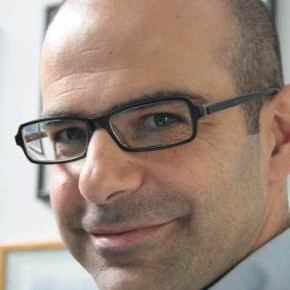Offshore and Onshore Wave Energy Converters: Engineering and Environmental Features
A special issue of Journal of Marine Science and Engineering (ISSN 2077-1312). This special issue belongs to the section "Coastal Engineering".
Deadline for manuscript submissions: closed (30 September 2021) | Viewed by 28845
Special Issue Editors
Interests: coastal engineering; ocean engineering; coastal risk; physical modelling; wave energy converters; wave–structure interaction; computational fluid dynamic
Interests: coastal engineering; maritime structures; coastal morphodynamic; coastal defences; wave energy converters
Special Issues, Collections and Topics in MDPI journals
Special Issue Information
Dear Colleagues,
In the last decade, extensive research has been carried out with the aim of designing new prototype devices that allow for the extraction of electricity from renewable energy sources, in order to contribute to a reduction of the use of non-renewable resources, and thereby to mitigate climate change impacts. Among the various renewable energy resources, energy extracted from sea waves is widely available, although it is currently poorly exploited. Furthermore, several technologies are being developed, but none of them seem to be very promising.
The purpose of this Special Issue is to publish the most exciting research with respect to the above subjects, and to provide a rapid turn-around time regarding reviewing and publishing, and to disseminate the articles freely for research, teaching, and reference purposes.
More specifically, high-quality papers regarding wave energy converter technologies related to the following topics are highy encouraged:
- Hydrodynamic numerical modelling;
- Experimental modelling and testing;
- Design optimization;
- Mooring modelling and design;
- Power take-off modelling and design;
- Levelized cost of energy analysis;
- Resource assessment;
- Environmental impacts;
- Policy, legislation, and socio-economic impacts;
- Case studies.
Dr. Luca Cavallaro
Prof. Diego Vicinanza
Guest Editors
Manuscript Submission Information
Manuscripts should be submitted online at www.mdpi.com by registering and logging in to this website. Once you are registered, click here to go to the submission form. Manuscripts can be submitted until the deadline. All submissions that pass pre-check are peer-reviewed. Accepted papers will be published continuously in the journal (as soon as accepted) and will be listed together on the special issue website. Research articles, review articles as well as short communications are invited. For planned papers, a title and short abstract (about 100 words) can be sent to the Editorial Office for announcement on this website.
Submitted manuscripts should not have been published previously, nor be under consideration for publication elsewhere (except conference proceedings papers). All manuscripts are thoroughly refereed through a single-blind peer-review process. A guide for authors and other relevant information for submission of manuscripts is available on the Instructions for Authors page. Journal of Marine Science and Engineering is an international peer-reviewed open access monthly journal published by MDPI.
Please visit the Instructions for Authors page before submitting a manuscript. The Article Processing Charge (APC) for publication in this open access journal is 2600 CHF (Swiss Francs). Submitted papers should be well formatted and use good English. Authors may use MDPI's English editing service prior to publication or during author revisions.
Keywords
- Wave power
- Ocean engineering
- Wave energy conversion
- Nonlinear hydrodynamics
- Power takeoff
- Moorings
- Environmental impact






